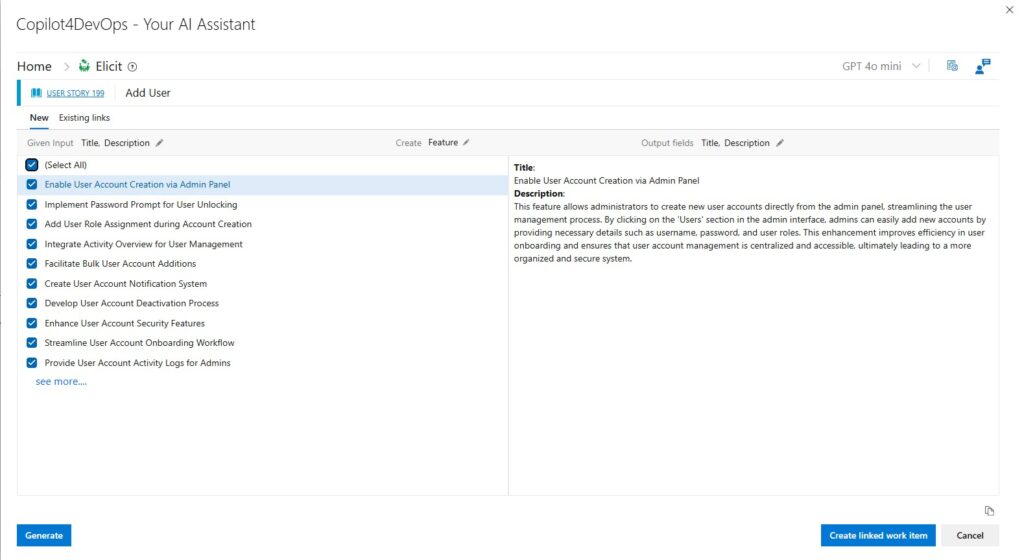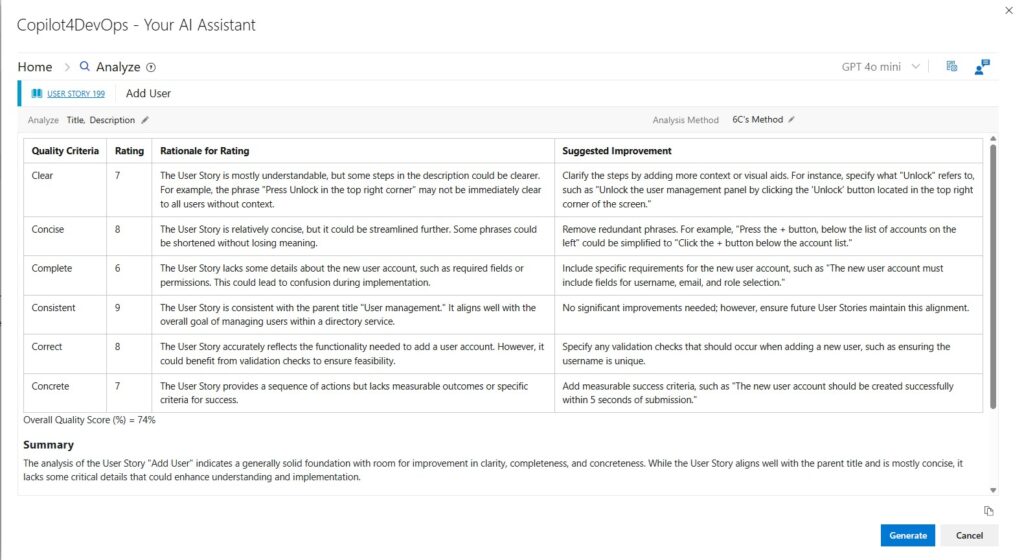
Requirements Engineering 101: Everything You Need to Know
- Modern Requirements
- April 16, 2025
- 9 minutes
Whether you are developing a physical or digital product, requirements are a must without any exception. Requirements help product development teams understand what needs to be done and how the final product should behave.
A project without requirements is just a guessing game. And guesses don’t lead to success.
However, having requirements isn’t enough. Simply listing them doesn’t guarantee success. To ensure they truly add value, teams must analyze, prioritize, document, validate, and continuously manage them throughout the project lifecycle.
“Requirements Engineering (RE)” can truly help with all these. It is a process that ensures requirements are clear, achievable, and aligned with the project’s goals.
The importance of RE is evident in project success rates. A survey done by the PMI states that 47% of projects fail to achieve their goals due to poor requirements management.
Table of Contents
What is Requirements Engineering? Breaking It Down
Requirements engineering is a critical component of product development. It is a well-structured approach to identify, analyze, validate, document, and manage the requirements during product development. It ensures that the stakeholders’ needs are identified and converted into actionable work items that the product development teams understand.
With the right requirements engineering tools, product teams can streamline their requirements engineering process and deliver reliable products that always meet stakeholders’ requirements.
The Requirements Engineering Process: 5 Key Steps for Success
Having a step-by-step process for RE is a boon in product development, as it provides complete and consistent requirements to the development teams.

Step 1: Requirements Elicitation (Gathering Needs & Expectations)
The process of requirements engineering starts with the collection or gathering of requirements. In this step, requirements engineers collect requirements from various sources.
This step ensures that teams clearly understand the needs of stakeholders and avoid all misunderstandings before they move towards product development.
Follow the methods below for the requirements elicitation:
- Communicate with Stakeholders: Frequently communicate with stakeholders, including product owners, development teams, project managers, etc., to understand their needs.
- Conduct a Survey: Collect customer requirements by conducting surveys.
- Quick Prototyping: Prepare a quick prototype to get early feedback from stakeholders and improve requirements accordingly.
- Analyze the Product Documents: If there are any product documents available, analyze them to understand more about the product and define requirements.
Furthermore, teams can use tools like Copilot4DevOps, a built-in requirements management AI assistant within Azure DevOps, to automate requirements elicitation from raw text data using AI. It also allows publishing AI-generated requirements into Azure DevOps as work items.

Our guide, “AI in requirements engineering”, will help you to understand how AI can be used in the different phases of RE.
Step 2: Requirements Analysis (Refining & Prioritizing Requirements)
Is listing all the requirements enough to start the product development? Not really!
The next step is to analyze the requirements to avoid conflicts and ensure consistency across all requirements.
In this phase, teams can:
- Categorize Requirements: Teams should divide each requirement into functional requirements and non-functional requirements. The functional requirements define what the system should do, and non-functional requirements are all about the reliability and performance of the software.
- Prioritize Requirements: Not all requirements are equally important. Some requirements are must-haves, some are necessary, and a few are optional. So, prioritize the critical requirements first to save resources.
- Filter Requirements: Filter the requirements to remove duplicate and inconsistent requirements.
Copilot4DevOps allows teams to analyze the requirements using different frameworks and methods, such as the 6C framework, Moscow method, PABLO criteria, etc. It can also provide a quality score for the requirements and suggest improvements and solutions.

Step 3: Requirements Specification (Documenting Clearly & Accurately)
At this stage, requirements are well-defined.
But if any miscommunications happen in the future, how will you solve them? Just by making assumptions? Not a good practice, right?
Documenting requirements and solving miscommunications based on documents is the only solution.
Good requirements documentation starts with the product introduction, including the product’s purpose, goals, important definitions, and glossary. Then, it contains the functional, non-functional, system, etc., requirements with proper description, test cases, acceptance criteria, etc.
Generally, it contains requirements in the “user story” or “use cases” format. For example, “As a user, I want signup functionality via Google”.
The Modern requirements4DevOps, a built-in requirements management tool within Azure DevOps, offers a “Smart Docs” module to create well-structured documents. It allows teams to use reusable templates to ensure consistency across documents.
By using Copilot4DevOps with “Smart Docs”, teams can auto-generate the documents based on the referenced work items.
Step 4: Requirements Validation (Ensuring Accuracy & Feasibility)
Once requirements are documented, it’s time to validate them to ensure they are accurate and meet the stakeholder’s needs perfectly.
The best approach to validate requirements is to review the requirements documents. Teams can use the “Review Module” offered by Modern requirements4DevOps to create a review request for documents, requirements, etc., and send it to the stakeholders to get feedback.
Check how the review module works in Modern Requirements4DevOps:
Furthermore, teams can also generate test cases with acceptance criteria for each requirement to ensure it can be implemented and tested properly.
Bonus Tip: Copilot4DevOps can help you automate the test case generation.
Step 5: Requirements Management (Tracking & Updating Requirements Over Time)
Requirements are dynamic. So, it is important to manage it throughout the project.
Requirements management ensures that changes are properly tracked, reviewed, and implemented without disturbing the project workflow.
For efficient requirements management, teams can use tools that offer features like version control to track changes, traceability to understand the connection between multiple work items, etc.
Why Does Effective Requirements Engineering Matter? The Big Benefits
When teams follow the correct approach for requirements engineering, it minimizes the risk, boosts the team’s efficiency, and ensures that the final product meets the exact requirements. Here, we have listed the major benefits of requirements engineering:
- Reduces Misunderstandings: Helps in overcoming misunderstandings by defining clear requirements and validating them.
- Improves Communication: Clearly defined documents in the requirements engineering process can help to improve communication between different team members.
- For example, NASA’s Mars Climate Orbiter mission failed as different teams used different measurement units for calculations. A well-defined RE process with clear documentation would have prevented the loss of a $327 million mission.
- Cost-effective Development: By specifying the requirements at the start of the product development, teams can properly estimate the budget and resources required to complete the project successfully.
- Improves Development Efficiency: Requirements engineering offers a clear roadmap for product development, which increases the efficiency of the development team.
- Helps to Meet Compliance and Regulatory Standards: By documenting compliance needs, teams can avoid legal risks and penalties.
Common Requirements Engineering Mistakes (And How to Avoid Them!)
Requirements engineering comes with a set of challenges, and projects can lead to failure if not tackled properly. Here, we have covered several challenges with a guide to avoid them.
- Incomplete Requirements: Not all requirements are properly documented, which can lead to potential problems during product development. By maintaining proper documents, teams can overcome this challenge.
- Lack of Stakeholder Involvement: If stakeholders are not involved in the requirements elicitation and validation, requirements may be misaligned with business needs. Teams can regularly do meetings with stakeholders to avoid such issues.
- Ignoring Non-Functional Requirements: Many teams just focus on the functional requirements, which can lead to performance issues in the later stages.
- Poor Traceability: When teams don’t use proper tools for traceability, they might face difficulties in tracking requirements and understanding how different requirements relate to each other. Modern Requirements4DevOps allows you to create traceability matrices.
- Constantly Changing Requirements: Frequently changing requirements can lead to costly rework, missed deadlines, and budget overruns. By performing the impact analysis before changing the requirements, teams can overcome this. Check how the “Impact Assessment” module of Copilot4DevOps works:
Agile vs. Traditional: How Does Requirements Engineering Change?
Traditional Methodologies (e.g., Waterfall) follow a linear approach to software development. In such methods, teams were used to perform the requirements engineering process at the start of the project. Changes to requirements later in the process can be costly and challenging to implement.
On the other hand, agile is an iterative approach to developing a product. It breaks down the product development into small and manageable chunks and iteratively completes the product. So, for each iteration, requirements engineering steps in to adapt to the evolving requirements.
Here, we have explained how requirements engineering varies in traditional and agile methodologies.
Aspect | Traditional Methodologies | Agile Methodologies |
|---|---|---|
Approach | Linear and sequential | Iterative and incremental |
Requirement Gathering | Comprehensive and upfront | Evolving and continuous |
Documentation | Extensive and detailed | Minimal and lightweight |
Change Management | Formal and often rigid | Flexible and adaptive |
Stakeholder Involvement | Limited to initial and final phases | Ongoing and collaborative |
Delivery | Single final product delivery | Frequent releases of functional components |
Closing Thoughts: Mastering Requirements for a Better Product
Requirements engineering is important in product development—whether in healthcare, finance, aerospace, or IT industries. Without clear requirements, teams risk misalignment, costly rework, and failed outcomes. By following the 5-step requirements engineering process, teams can have well-structured requirements on hand.
One partial piece of advice is that you should never hesitate to invest in the right tools to enhance requirements engineering. Modern Requirements4DevOps is a powerful requirements management tool developed for teams working with Azure DevOps.
MR4DevOps transforms how requirements are captured, connected, and managed throughout the project lifecycle. From smart documentation and baselining to visual modeling, impact analysis, and end-to-end traceability—everything happens in one place without leaving your DevOps environment.
By using modern tools, teams can avoid costly rework and stay aligned with business goals.
Frequently Asked Questions (FAQs)
1. Why is software development requirement analysis important?
Requirement analysis in software development helps to prevent scope creep, reduce development costs, and ensure the final product meets user expectations.
2. Explain the main steps in the requirements analysis process.
There are 5 main steps in the requirements analysis process:
- Requirement gathering
- Requirement validation
- Requirement prioritization
- Requirement Documentation
- Change management in requirements
3. How does Modern Requirements4DevOps help in requirements analysis?
It provides a built-in solution within Azure DevOps to track, manage, and validate requirements efficiently.
4. Is there any AI tool available for requirements gathering?
Yes, Copilot4DevOps is a generative AI tool to gather requirements from raw input data, documents, etc.

